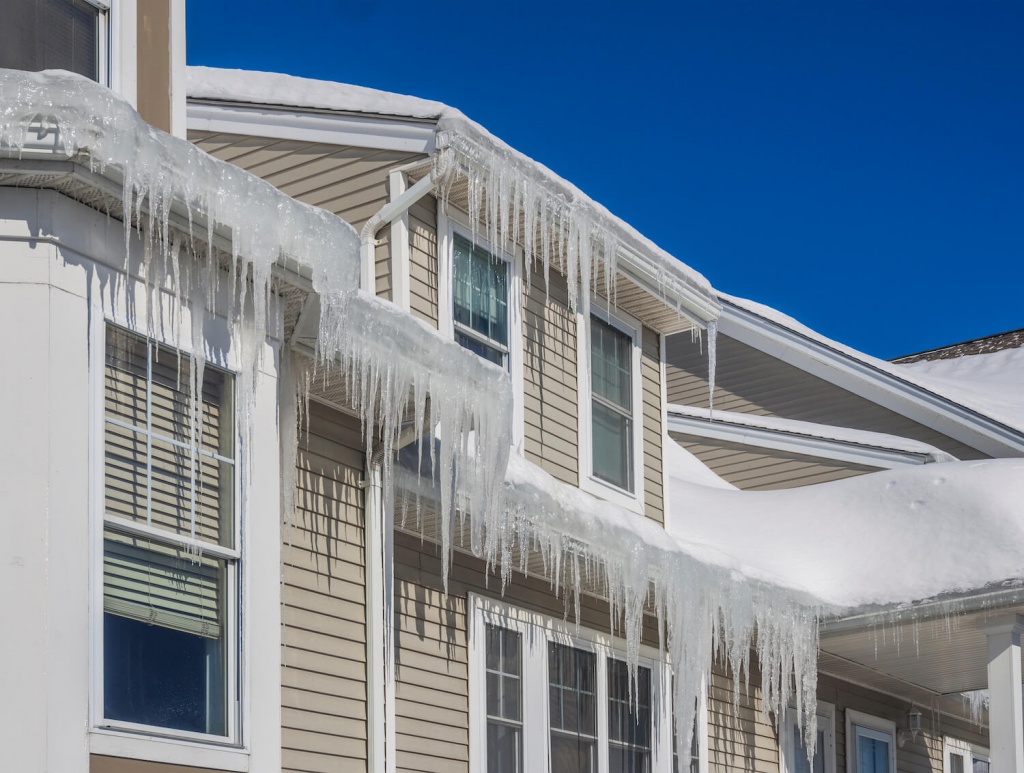In regions that experience frigid winters, ice dams are a common and problematic occurrence. They are caused when snow that has been accumulating on the roof melts, moves to the edge of the roof and then refreezes, forming a barrier that prevents water from flowing down the roof. Because of the dam, water may pool up under the shingles of the roof and then seep into the attic or the walls of the house, resulting in damage to both the roof and the underlying structure of the building.

There are a number of different approaches you can take to forestall the formation of ice dams on your roof.
The following is a list of some of the most effective strategies:
Good Roof Temperature
Maintain a low temperature on your roof: Maintaining a temperature on your roof that is as low as possible is one of the most effective ways to avoid ice dams from forming on your property. This can be accomplished by installing additional insulation within the attic, sealing any gaps or openings within the structure that permit warm air to escape into the attic, and ensuring that your heating system is operating as effectively as possible.
Clear the Roof to Prevent Ice Dams
Remove snow from the roof If you have a lot of snow on your roof, it can be good to remove it before it has a chance to melt and then refreeze it as an ice dam. This can be done if you have a lot of snow on your roof. If you want to remove the snow off the edge of the roof in a risk-free manner, you can do so using a roof rake.
Best Ice Dam Prevention
Install heat cables or heat tape: Heat cables and heat tape are electrical devices that can be installed on your roof to prevent ice dams from developing. These devices can be used in conjunction with each other. They function by delivering a source of heat to the roof, which helps to melt the snow and prevents it from refreezing after it has melted.
De-icing Product
Use a product designed to prevent ice dams from forming on roofs. There are a number of de-icing products available on the market that may be applied to a roof in order to avoid the formation of ice dams. These products often include a chemical that not only assists in the melting of snow but also prevents it from refreezing after it has been melted.
If you follow these measures, you can reduce the likelihood of ice dams building on your roof and causing damage to your home during the winter months. It is imperative that you keep safety in mind while you are working on or near your roof because it may be an extremely hazardous environment. If you are unclear on how to safely remove snow from your roof or install heat cables, it is important to engage a professional to handle the task for you so that you do not put yourself or others in danger.










